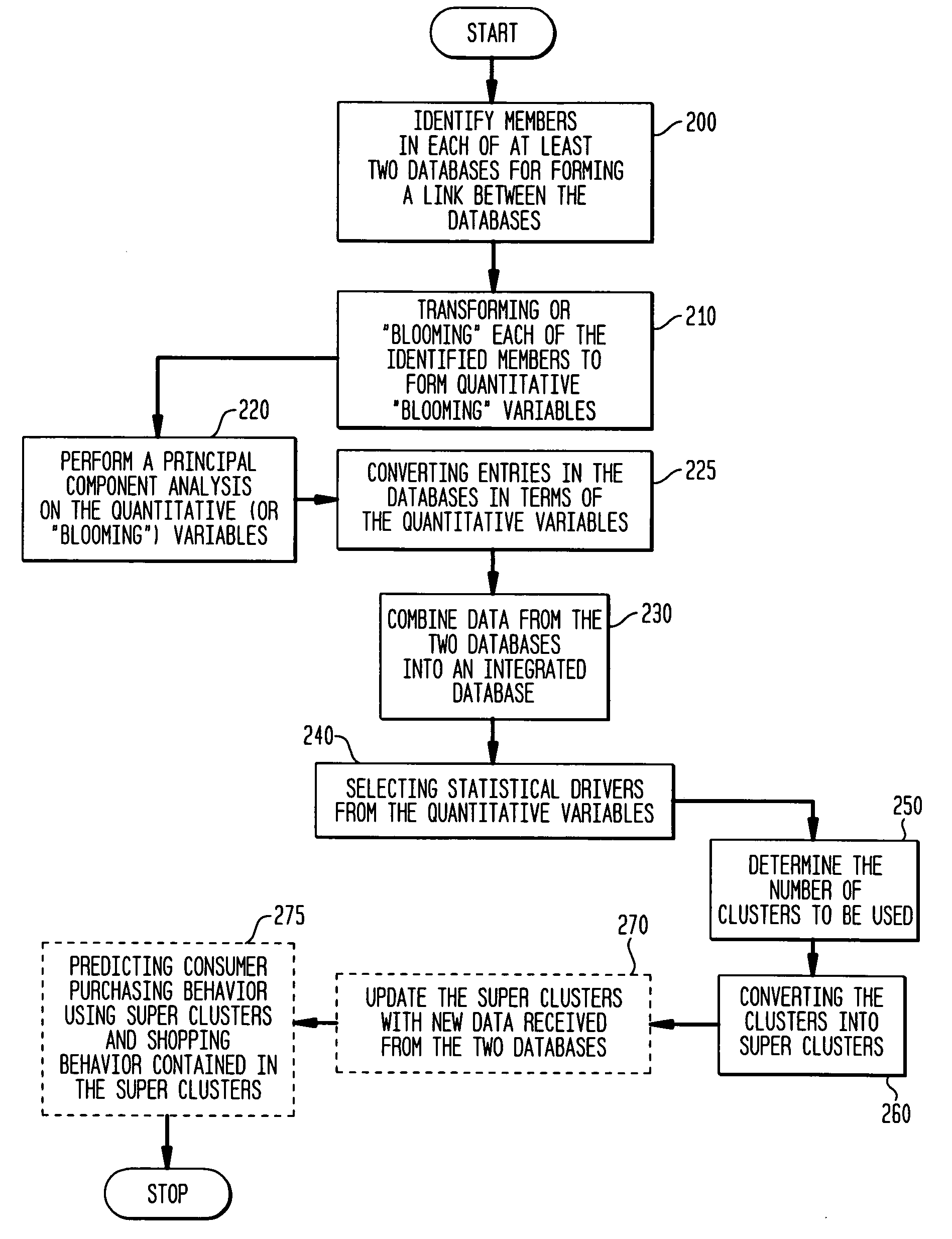Process and system for integrating information from disparate databases for purposes of predicting consumer behavior
a technology of disparate databases and consumer behavior, applied in the field of process and system for integrating information from disparate databases for the purpose of can solve the problems of becoming disfavored in the united states, unable to readily obtain information about customers who shop at their competitors' stores and/or other merchants within their business category, and unable to accurately predict consumer purchasing behavior. to achieve the effect of effectively predicting consumer purchasing behavior and effectively integrating consumer transactional databases
- Summary
- Abstract
- Description
- Claims
- Application Information
AI Technical Summary
Benefits of technology
Problems solved by technology
Method used
Image
Examples
Embodiment Construction
[0035]FIG. 1 shows a diagram of an exemplary embodiment of a system according to the present invention which integrates information from at least two disparate databases for predicting consumer behavior.
[0036] In particular, an integrating arrangement 10 of the present invention is connected to a communication network 20 via a first connection 15. The communication arrangement 20 can be a local area network, a wide area network, the Internet, an Intranet, etc. A first database 25, a second database 35, . . . an Nth database 45 (containing information about consumer purchasing behavior) and an integrated database 55 are connected to the communication network 20 via a second connection 30, a third connection 40, a fourth connection 50, and a fifth connection 60, respectively. For example, at least one of the databases 25, 35, 45 may contain information regarding the transactions of the customers of a credit issuing agency or of a merchant (e.g., MasterCard International Incorporated—...
PUM
 Login to View More
Login to View More Abstract
Description
Claims
Application Information
 Login to View More
Login to View More - R&D
- Intellectual Property
- Life Sciences
- Materials
- Tech Scout
- Unparalleled Data Quality
- Higher Quality Content
- 60% Fewer Hallucinations
Browse by: Latest US Patents, China's latest patents, Technical Efficacy Thesaurus, Application Domain, Technology Topic, Popular Technical Reports.
© 2025 PatSnap. All rights reserved.Legal|Privacy policy|Modern Slavery Act Transparency Statement|Sitemap|About US| Contact US: help@patsnap.com



